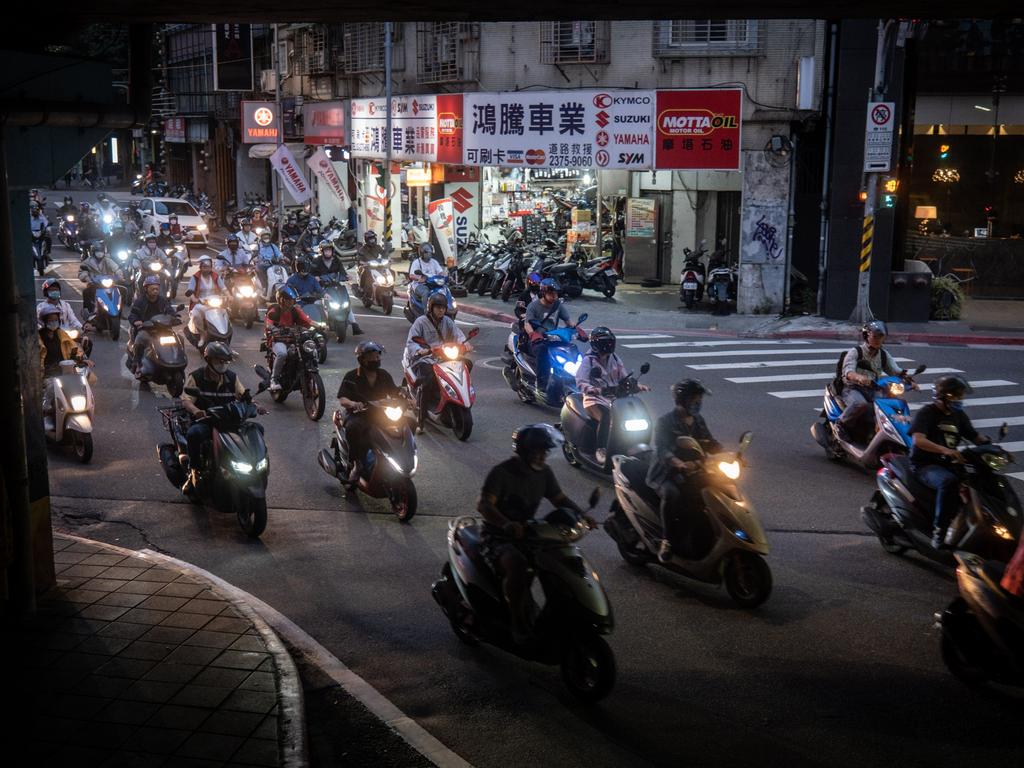Is Taiwan ready to defend itself against regional bullies like China?

The mobile phone switch to a Chinese network was a clear reminder that in recent times Kinmen hasn’t been ignored by China.
Following the visit of US House of Representatives speaker Nancy Pelosi to Taipei last August, Chinese drones were spotted on several occasions flying over Kinmen. One of them was shot down by Taiwanese soldiers. Kinmen’s permanent population is estimated at between 50,000 and 60,000. There are 12 islands in the group, only two of which – Kinmen Island (134sq km) and Lesser Kinmen (13sq km) – have permanent civilian populations.

In October 1949 and July 1950 China tried to invade Kinmen. The islands were seen by Chiang Kai-shek as part of his great dream to reconquer the Chinese mainland and defeat Mao. At that time, more than 100,000 soldiers were posted on Kinmen. For China, conquering Kinmen and the Matsu Islands, (around 200km further north) was seen as critical for a final push toward Taipei (more than 300km away) and total victory in the Chinese civil war.
In 1958, Beijing and Taipei fuelled an atmosphere of civil war across the channel separating Kinmen and Xiamen. For 20 years each side bombarded the other on alternate days with non-explosive shells stuffed with propaganda leaflets. In Kinmen today, maintaining good relations with China is seen as a necessary complement to its ties with Taipei. Chinese tourists are a significant contributor to the local economy.
Like many tourists, I was fascinated by the abandoned underground tunnels and bunkers, where locals sheltered during earlier bombardments, and the Beishan Broadcasting Wall, built in 1967 as a propaganda loudspeaker to transmit democracy messages towards China.
The tour guide had moved to Kinmen from Taipei some decades earlier and preferred to talk about the island’s bird life rather than security threats. He pointed out the impressive new houses being built on the island which looked out to Xiamen. There are now about 5000 troops stationed on Kinmen.
But what of the military value of Kinmen now? Opinions differ. A takeover of Kinmen wouldn’t fulfil the overall Chinese goal of taking Taiwan. On the other hand, some argue the PLA needs to eliminate all the coastal islands to prevent them gathering intelligence or taking pot shots from the rear as the invasion headed to Taiwan proper. That’s possible, although an assault on Taiwan would be a comprehensive business – by sea and air, fifth-columnists, cyber, space and electronic warfare.
I saw the remnants of metal spikes poking out of the sand on Cihu beach that aimed to deter amphibious invaders, a reminder of the island’s vulnerability. A recent RAND study found that placing artificial reefs near potential landing beaches to deter or defeat a Chinese invasion would still be effective.Ships and/or landing craft that tried to operate in those areas would run aground or even impale themselves on reefs, rendering them ineffective, stationary targets.Putting anti-ship and anti-aircraft missiles in the island would also complicate any PLA planning to attack Taiwan. But occupying an island of Kinmen’s size would take time and effort, and complicate wider PLA plans.
Whatever the utility of artificial reefs, it’s likely the Chinese will try to neutralise Kinmen one way or the other. A military planner would consider eliminating the potential threat a prudent course of action.

The political and symbolic significance of Kinmen is also important from Beijing’s perspective. Hit Kinmen, or take it, and it’s clear Xi has rolled the dice. The PLA has twice tried to capture the islands; Xi would boast he’d achieved what other Chinese leaders failed to do.
I asked our driver why he’d come to Kinmen 30 years ago. He said he’d moved to fight the Chinese communists even though he knew he’d face far bigger forces.
While he suggested the prospect of Kinmen becoming part of China any time soon wasn’t likely, he and the guide assured me they and their fellow Kinmenese would fight if required.
Back on the western beach of Kinmen, a newly married couple were having their wedding photos taken, seemingly indifferent to the immediate proximity of the Chinese mainland.
I came away from the visit feeling that just as the Ukrainians have responded so effectively to defend themselves against a giant enemy who doesn’t consider their country a real state, the people of Kinmen would manage just as well.
Anthony Bergin is a senior fellow at Strategic Analysis Australia and an expert associate at the National Security College.







I stood on Cihu beach, on the Taiwanese island of Kinmen, contemplating the hazy silhouettes of Xiamen skyscrapers only three kilometres away on the Chinese mainland. My travelling companion’s phone pinged. The message from Vodafone said: “Welcome to China”.